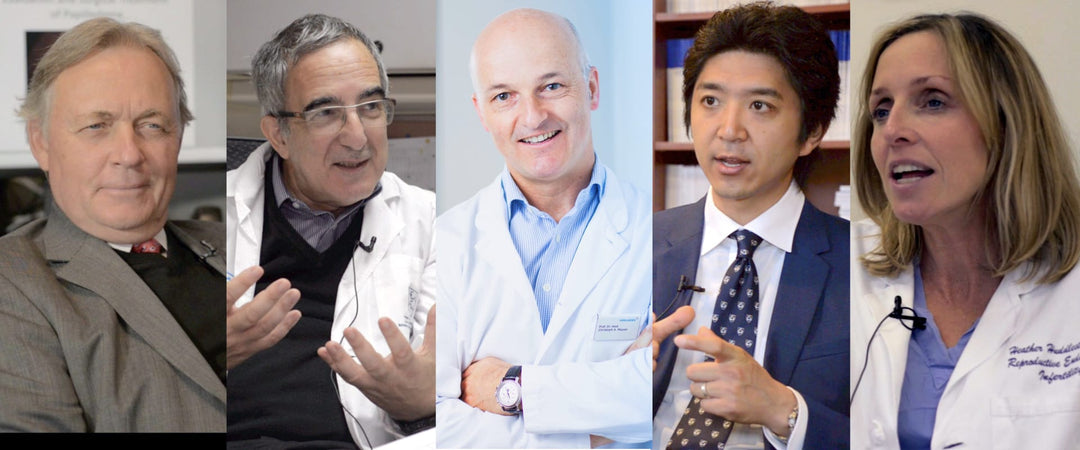Ikääntymisen ja elinikäisen tutkimuksen asiantuntija, lääketieteen tohtori Steven Austad, selittää, miksi laboratorioeläinkokeet eivät vastaa todellisen maailman olosuhteita. Hänen mukaansa standardilaboratorioympäristöt eivät jäljittele luonnollisia haasteita. Austad huomauttaa, että yli 80 prosenttia geeneistä toimii päivittäisissä rytmeissä, joita laboratorio-olosuhteet eivät ota huomioon. Hän vaatii laajaa uudelleenarviointia eläinkoeyhteisöjen hoidossa parantaakseen tulosten sovellettavuutta ihmisterveyteen.
Ihmisen ikääntymisen ja sairauksien tutkimusmalleja kehitetään eläinkokeissa
Siirry osioon
- Luonnonolosuhteet vs. laboratorio-olosuhteet
- Luonnon ympäristöhaasteet
- Päivittäiset rytmit ja geeniekspressio
- Laboratorio-olosuhteiden puutteet
- Eläinkoemallien uudelleenarviointi
- Koko keskustelu
Luonnonolosuhteet vs. laboratorio-olosuhteet
Lääketieteen tohtori Steven Austad korostaa eläintutkimusten keskeisiä eroja luonnossa ja laboratorio-olosuhteissa. Hän kyseenalaistaa laboratoriotulosten suoran soveltuvuuden ihmisen sairauksiin käyttäen esimerkkinä beeta-amyloidin kertymistä ihmisapinoihin. Nämä apinat kehittävät amyloidiplakkeja samankaltaisesti kuin ihmiset, mutta eivät saa Alzheimerin tautia. Tämä ristiriita korostaa eläinkoetulosten soveltamisen monimutkaisuutta ihmislääketieteessä.
Lääketieteen tohtori Anton Titov aloitti keskustelun kysymällä eläinhavaittojen ja ihmiseen soveltuvuuden korrelaatiosta. Keskustelussa käy ilmi, että lajien samankaltaisuudet eivät yksinään takaa ennustearvoa ihmisen sairauksille. Tämä haastaa perusolettamuksia biomedikaalisessa tutkimuksessa.
Luonnon ympäristöhaasteet
Luonnonolosuhteet tarjoavat ympäristöhaasteita, jotka laboratorio-olosuhteet poistavat täysin. Lääketieteen tohtori Steven Austad selittää, että luonnossa eläimet kohtaavat säääärimmäisyyksiä, taudinaltistusta ja monia selviytymispaineita. Nämä luonnon haasteet luovat valintapaineita terveyden ja sinnikkyyden ylläpitämiseksi. Luonnossa eläinten on pysyttävä terveinä selviytyäkseen saalistajista ja ympäristöstressistä.
Laboratorioeläimet menettävät nämä selviytymiskyvyt suojatun jalostuksen kautta. Lääketieteen tohtori Steven Austad toteaa, että laboratoriosta vapautetut eläimet eivät selviäisi edes päivää luonnossa. Tämä perustavanlaatuinen ero vaikuttaa siihen, miten tulkitsemme ikääntymis- ja sairaustutkimuksen tuloksia.
Päivittäiset rytmit ja geeniekspressio
Lääketieteen tohtori Steven Austad paljastaa, että yli 80 % geeneistä noudattaa päivittäisiä rytmejä ja aktivaatiokuvioita. Nämä cirkadiaaniset rytmit ovat ratkaisevia oikean biologisen toiminnan ja terveyden ylläpidon kannalta. Luonnossa valonmuutokset tapahtuvat asteittain lämpötilanvaihteluiden kera. Nämä luonnolliset siirtymät synkronoivat oikein biologiset kellot ja geeniekspressiokuviot.
Laboratorio-olosuhteet käyttävät äkillisiä valon päälle/pois -vaihteluita, jotka eivät matki luonnollisia vuorokausirytmejä. Tämä keinotekoinen ympäristö häiritsee normaaleja geenisäätelykuvioita. Tällaiset häiriöt voivat muuttaa merkittävästi tutkimustuloksia ikääntymis- ja sairaustutkimuksissa.
Laboratorio-olosuhteiden puutteet
Vakiintuneet laboratoriokäytännöt luovat liian yksinkertaistettuja ympäristöjä, joilta puuttuu ekologista validiteettia. Lääketieteen tohtori Steven Austad selittää, että tutkijat ovat historiallisesti standardoineet olosuhteet kokeiden yksinkertaistamiseksi. Laboratoriot ylläpitävät vakiolämpötiloja ja poistavat infektioaineita. Vaikka hyödyllisiä kontrollointiin, nämä käytännöt poistavat luonnolliset stressorit, jotka muovaavat eläinten biologiaa.
Lääketieteen tohtori Steven Austad korostaa, että nykyiset laboratorioeläimet edustavat hyvin erilaista biologista järjestelmää kuin villiyttä vastaavat. Haastattelu lääketieteen tohtori Anton Titovin kanssa tutkii, kuinka nämä keinotekoiset olosuhteet saattavat vääristää tutkimustuloksia. Luonnollisten haasteiden puuttuminen tarkoittaa, että laboratorioeläimet eivät koskaan kehitä samoja sinnikkyysmekanismeja kuin villieläimet.
Eläinkoemallien uudelleenarviointi
Lääketieteen tohtori Steven Austad vaatii perusteellista uudelleenarviointia laboratoriolaitosten hoidosta. Hän kannattaa realististen ympäristöolosuhteiden palauttamista eläinkoeympäristöihin. Tämä lähestymistapa matkisi paremmin haasteita, joita eläimet kohtaavat luonnossa. Tällaiset muutokset voisivat parantaa merkittävästi eläinkoetulosten siirtoarvoa ihmislääketieteeseen.
Keskustelu lääketieteen tohtori Anton Titovin kanssa korostaa tarvetta ekologisesti valideimmille tutkimusmalleille. Tohtori Austad ehdottaa, että realismin lisääminen takaisin kokeisiin on ratkaisevan tärkeää mielekkäässä ikääntymistutkimuksessa. Tämä paradigman muutos voisi johtaa tarkempiin ennusteisiin ihmisen ikääntymisprosesseista ja sairauden kehityksestä.
Koko keskustelu
Lääketieteen tohtori Anton Titov: Professori Austad, teette paljon tutkimusta eri eläinlajeilla. Kirjoititte kaksi kirjaa ikääntymisestä, elinajanodotteesta ja terveyden kestosta eri eläinlajeilla. Kuinka vahva on korrelaatio siinä, mitä havaitsemme luonnossa, ja sen soveltuvuus ihmiseen?
Annan esimerkin. Esimerkiksi beeta-amyloidi kertyy ihmisapinoihin, mutta he eivät saa Alzheimerin tautia niin kuin ymmärrän. Se on luultavasti totta, mutta olemme hyvin samankaltaisia ihmisapinoiden kanssa. Joten mitä pidät korrelaatiosta siinä, mitä opimme eläimistä, ja kuinka se on sovellettavissa ihmiseen?
Lääketieteen tohtori Steven Austad: Kyllä, mielestäni meidän todella on uudelleenarvioitava eläinkoetapaamme. Yksi asia, josta pidän eläinten tutkimisessa luonnollisessa elinympäristössä, on se, että luonnossa elämisessä on haasteita. Siinä on vaikeuksia sään, taudinaltistuksen ja monien muiden asioiden suhteen.
Tiedämme, että eläimet elävät menestyksekkäästi luonnossa, koska ne ovat terveitä. Heti kun niiden terveys alkaa heiketä, ne ovat kuolleet. Laboratoriossa emme saa näitä vaikutuksia lainkaan.
Laboratoriossa eläimet eivät kohtaa äärimmäisiä lämpö- ja kylmyysolosuhteita. Emme edes saa niille normaaleja päivittäisiä rytmejä. Joten tapa, jolla yritämme matkia luontoa – tiedämme nyt, että yli 80 % geeneistämme kytkeytyy päälle ja pois päivittäisissä rytmeissä ja kuvioissa.
Mitä emme tee laboratoriossa, on se, että sammutamme valot, sytytämme valot, ja oletamme matkivamme luonnollisia biologisia rytmejä. Mutta luonnossa valoja ei sammuteta ja sytytetä. Ensinnäkin valo häviää hitaasti. Se syttyy hitaasti.
Lämpötilan muutokset liittyvät siihen. Se muuttuu hitaasti mutta dramaattisesti. Emme matki mitään tätä laboratoriossa. Pyrimme pitämään infektiot mahdollisimman poissa laboratoriolaitoksistamme.
Oli jokin syy tehdä kaikki tämä olosuhteiden standardoimiseksi, koska se yksinkertaistaa kokeitamme. Mutta jossain vaiheessa meidän on alettava lisätä realismia takaisin laboratoriokokeisiimme.
Eläimet, joita nyt käytämme laboratoriossa – jos vapauttaisimme ne luontoon, ne eivät selviäisi edes päivää. Ne ovat menettäneet kaikki nuo kyvyt. Se tarkoittaa, että laboratoriossa tutkimme hyvin erilaista asiaa. Ne eivät pystyisi käsittelemään todellisen maailman ongelmia.
Joten mielestäni on aika uudelleenarvioida laboratoriolaitostemme hoitoa.




